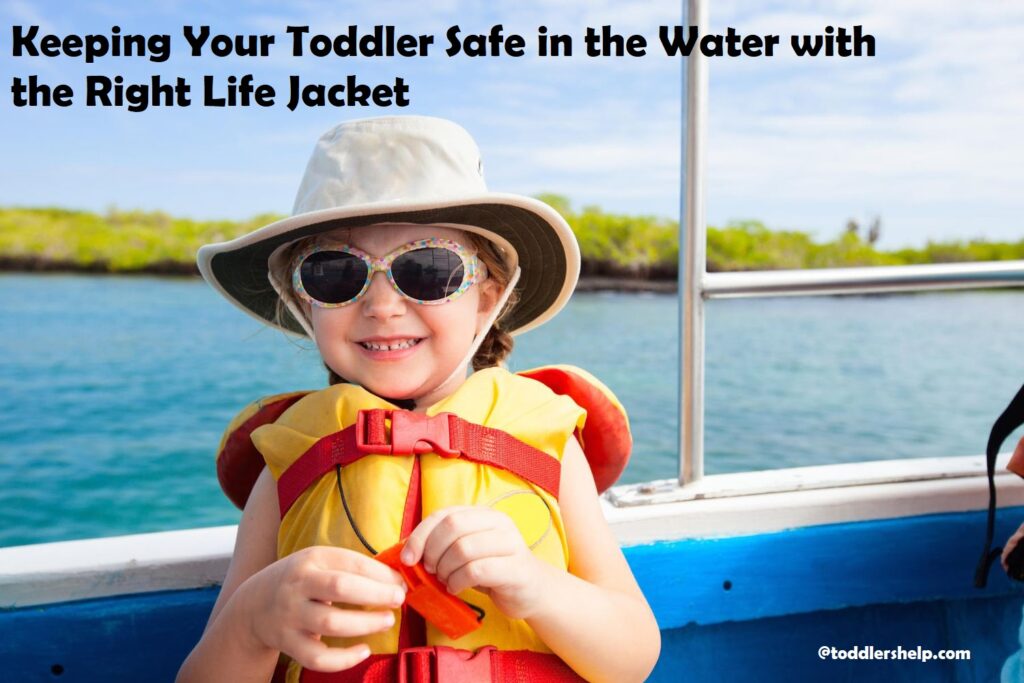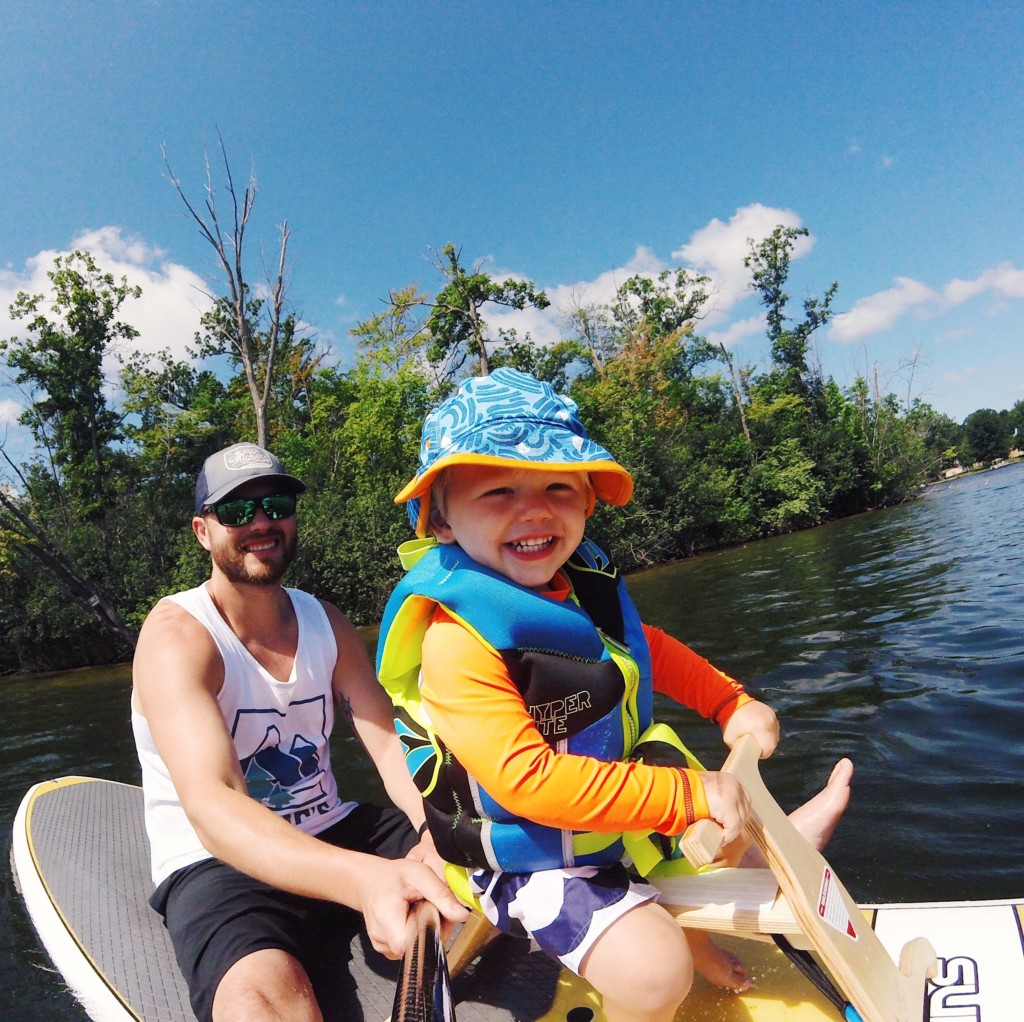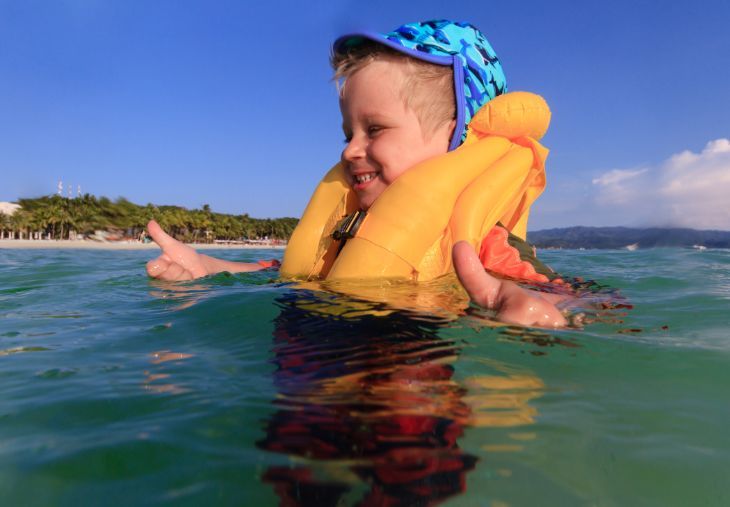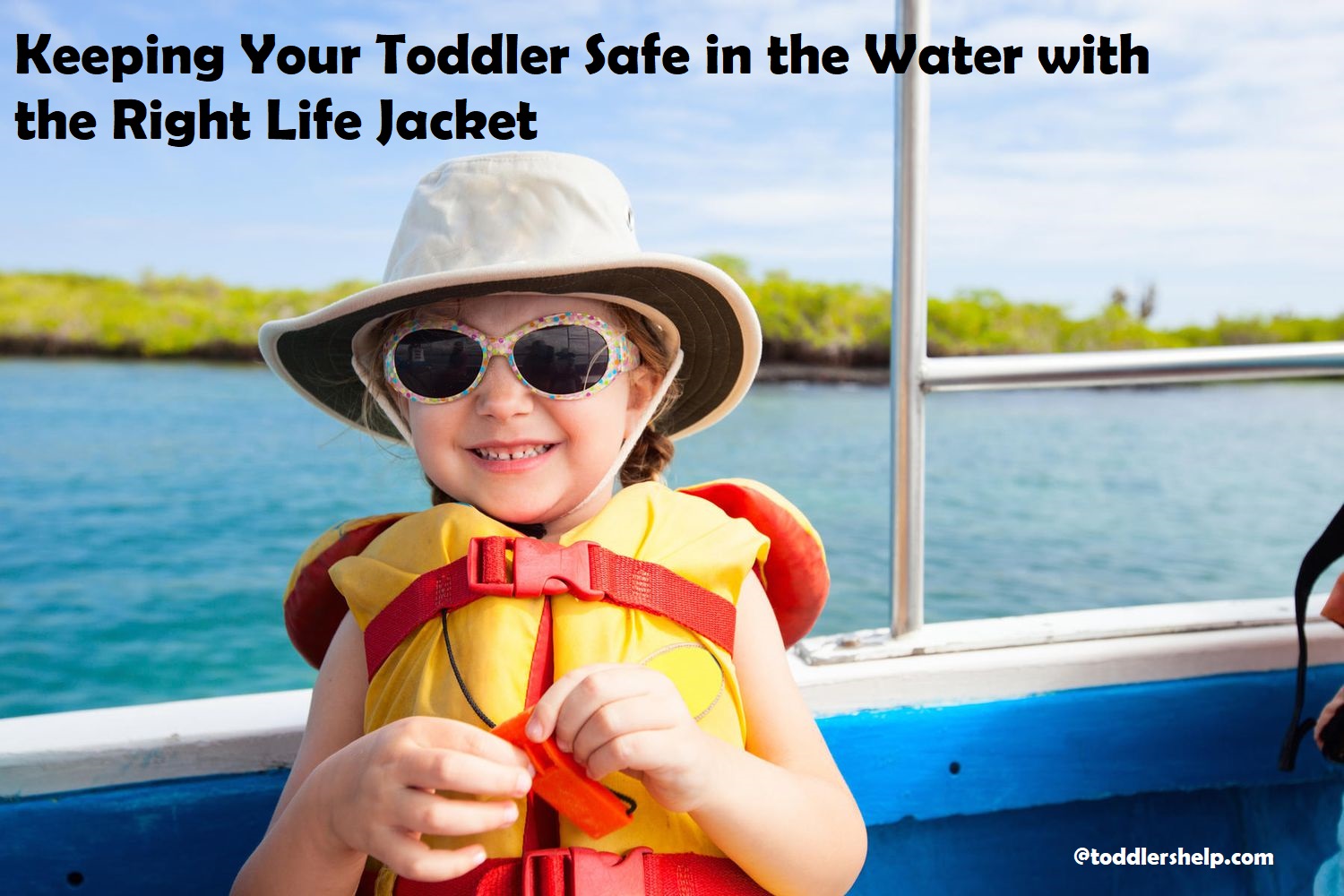Are you concerned about keeping your toddler safe in the water? You don’t have to worry; this guide has all you need to know about finding the right life jacket for your little one.
From choosing the right size to considering important safety features, we’ll show you how to ensure your toddler is safe and secure while enjoying time in the water.
It is important for parents and guardians to provide the safest environment possible for their toddler when it comes to water. Water safety is especially important for toddlers, as they are just beginning to learn how to swim and do not have the knowledge of an adult in regard to the dangers that can be associated with water.
To ensure that your toddler stays safe while swimming, it is important to provide him/her with a good quality life jacket that is appropriate for his/her age and size.
This guide will provide you with all the information you need on selecting the right life jacket and other tips on keeping your toddler safe in and around water.
Importance of water safety for toddlers
Keeping toddlers safe in and around the water is an essential part of parenting. Drowning is one of the leading causes of injury-related death for children ages 1 to 4 and it can happen quickly, with no warning. But, with proper supervision and safety measures, drownings can be prevented.
The most important safety measure to take when introducing a toddler to the water is using life jackets designed specifically for younger children.
Life jackets are designed to keep heads above water should a child fall into a pool or other body of water. In addition to providing buoyancy, they also help toddlers stay in one location should they become separated from parents or caregivers. Life jackets can be found in a variety of sizes and styles and should always be fitted properly by someone trained in fitting life jackets correctly.
For added protection, owners may also choose to invest in specialized life vests designed specifically for infants or toddlers with additional support around the neck areas that ill fit snugly but comfortably when inflated and worn correctly.
Purpose of a life jacket for toddlers
A life jacket is one of the most important pieces of safety equipment in any aquatic activity, especially when it comes to toddlers.
A life jacket is designed to keep a user’s head above the water and keeps them afloat while they are in the water. This type of flotation device is designed to fit securely around a toddler’s body and chest, ensuring that they don’t drift away from their parents or guardians. It also prevents them from slipping underwater, thus providing an extra layer of protection against drowning.
It is important for parents and guardians to remember that no matter how well a child can swim, there is always the possibility for unexpected hazards and accidents in the water. Wearing a properly fitting life jacket can be a deciding factor between life and death in such situations.
Brief overview of the guide
This guide is designed to provide parents with an overview of the different types of toddler life jackets available and what features to look for when purchasing one.
It covers basics such as Life Jacket Standards, Standards for Flotation Devices, and Guidelines for Care and Safety in High-Energy Sports. In addition, there are a few tips about how to keep your child safe in the water and the importance of keeping your toddler’s life jacket properly fitted.
The guide also contains a helpful list of resources containing further information on life jacket safety and maintenance.
Understanding Life Jackets for Toddlers
Life jackets come in many shapes, sizes, and styles. It’s important to select the right life jacket for your toddler in order to ensure their safety. Life jackets come with two ratings – Type I, II and III. These ratings vary based on the type of activity, the age range for which it is designed for, and how much buoyancy is involved.
Type I: Type I life jackets are designed for people who are traveling on open waters or waters with strong currents where immediate rescue may be difficult to acquire. Generally speaking, Type I lifejackets are designed for use over longer distances and provide the most flotation compared to other types of jackets.
Type II: Designed specifically for recreational activities such as fishing or leisurely boat trips where immediate rescue is available should someone go overboard. This type of jacket provides a good level of flotation but not as much as a Type I jacket would provide.
Type III: A great choice if your child is just beginning to get used to swimming and will only be around more shallow bodies of water areas such as beaches or lakes with gentle waves or currents where help would be more quickly available if needed. They are constructed with less foam than either Type l or II jackets and may not offer enough protection if your child were in open water areas or stronger currents.
Types of life jackets for toddlers
When it comes to safety, there is no substitute for an appropriate life jacket when toddlers are around open water. Life jackets come in a variety of types and one type may be more suitable for a particular activity or given drown-risk conditions than another. Researching the different types and properly fitting the life jacket to your toddler are two key components for providing maximum protection.
Some popular types of U.S. Coast Guard-approved life jackets include:
Inflatable Life Jackets: These jackets rely on compressed gas cylinders or Co2 cartridges to inflate with air when they become immersed in water; they provide excellent mobility, comfort and maneuverability when inflated, but require special instructions regarding maintenance and must be inspected regularly for wear and proper functioning.
Hybrid Life Jackets: A blend of foam buoyancy materials such as expanded polystyrene (EPS) foam covered with a neoprene shell; this type of jacket offers buoyancy, comfort during physical activity but requires additional care to keep the components (zippers) in working order.
Foam Puddle Jumpers: Designed with two adjustable straps between the arms and lower body/ legs that attacharound the waist; this style provides freedom while also keepingthe torso upright when submerged in water as well as movement once back on land due to its lightweight design and soft material.
It is essential that you consult with an expert who can provide advice on which type of life jacket is right for your toddler based on the activities they will be participating in.
Choosing the right size for your toddler
It is important to choose a life jacket that fits properly in order to ensure your toddler’s safety in the water. Life jackets should never be too big or too small; they should hug the body and not restrict movement or impede breathing. Most children’s life jackets are based on US Coast Guard standards and come with sizing labels such as “infant/toddler”, “child universal”, and “adult universal”.
To make sure you get the correct fit for your toddler, you will need to measure their:
- Chest size: Measure around your child’s chest at the widest part
- Weight: Use an appropriate bathroom scale; however, if your child is too small for this method, then estimate the weight according to standard charts
Once you have measured your toddler, compare these measurements with the sizing chart for specific product models. Generally speaking, infant/toddler sizes start at 8-30 pounds or chest size 15-25 inches while Universal Child sizes range from 30-50 pounds or 25-30 inches. Adult Universal sizes start at 50pounds or greater. It is best to err on the side of caution when making sizing decisions – it is always better to go with a slightly larger size than one that is slightly smaller because a larger jacket has more buoyancy.
Factors to consider when selecting a life jacket
When selecting a suitable life jacket for your toddler, it’s important to consider several factors. One of the most important ones is the size of the life jacket, as too small or too big can lessen its effectiveness. Additionally, you will want to look at buoyancy and flotation (how much it keeps your toddler afloat), comfort, ease of use, UV protection and visibility.
To ensure you are selecting the right size jacket for your toddler, take measure their chest and weight prior to purchase. Many manufacturers provide reference charts that will make it easy to identify which size is best for your child.
Buoyancy is another key factor when selecting a life jacket for your toddler as it determines how well a life jacket can support their bodyweight when in water. Typically, jackets are rated from Level 50 up through Level 150 with Level 150 providing superior buoyancy support. In most cases and depending on your child’s age level 100-150 jackets are recommended for toddlers over 30 pounds for recreational purposes such as swimming in pools or designated swim locations in lakes/oceans. Some jackets also come with adjustable foam waist bands which make them more comfortable to wear while providing extra support when in the water; however they are generally not recommended due this component reducing their overall buoyancy level.
It’s also important to consider comfort when selecting a life jacket; some jackets may contain rigid foam flotation material that can rub against sensitive skin over time if worn too long or tight-fitting straps which may dig into skin during use and become uncomfortable over time. Make sure you select an option containing flexible and soft fabric material that will keep your child comfortable no matter how long they wear it along with adjustable straps which can easily be fastened without causing any discomfort during use.
Lastly you should take into consideration UV protection as well as visibility when choosing a life jacket due to the increased health risk posed by sunlight exposure directly on skin while swimming or even simply being outside or on beach/pool side; opt for a colorful style containing UPF material that has been tested and verified against ultraviolet radiation both upstream and downstream wavelengths A&B (293 nanometer–315 nanometer). This will minimize direct exposure resulting from sunlight reflection off of water surfaces while providing additional visibility signaling if needed during emergencies in murky waters or lakes/oceans containing heavy currents or tides as they often appear foamier than jackets made out off Nylon fabric only material resulting further visibility issues underwater situations.
Tips for Using Life Jackets with Toddlers
When it comes to outfitting your toddler with a life jacket, there are a few key points to keep in mind. Having the right fit, type and use of a life jacket can help keep your toddler safe in the water.
Fit – It’s important to make sure that your life jacket fits your toddler properly to ensure comfort and adequate flotation. You should fit the life jacket on them first before taking them into the water. Any adjustments needed, such as straps or buckles, should always be done while your child is out of the water.
Type – Most variations of PFDs will fit toddlers, but they should be categorized as one of these types: inflatable or foam floatation device (FFD). An FFD is essential for non-swimmers while an inflatable PFD may work better for older toddlers who are beginning to swim independently.
Use – Have an adult wear a life jacket at all times when having toddlers near water for optimal safety. This can create a role model for children and ensure that there is constant supervision by an individual wearing a proper fitting PFD at all times. Additionally, be sure not to overinflate any inflatable PFD’s as this can hinder their mobility and cause discomfort.
Preparing your toddler for wearing a life jacket
Teaching your toddler to be comfortable in the water can be a positive and important precursor to learning how to swim. As such, getting your child used to wearing a life jacket is essential. Before introducing them to the water, it’s best for parents or adults supervising over the toddler to first become familiar with their particular life jacket. Make sure that it is U.S. Coast Guard approved and fits the The U.S. Coast Guard requires that children up to age 8 who are riding in recreational boats must wear an appropriately sized personal flotation device (PFD) unless below deck or in an enclosed cabin of a vessel. To ensure proper fitment, measure your child’s chest size and check the manufacturer’s recommended weight limit for each life jacket model or size range, or select one based on a properly fitting vest at a store or pool deck fitting station where available.
Then, with your toddler either on land or sitting in shallow water familiarize them with its feel—touching its straps, tugging on strings and buckles—so they may feel more confident when entering deeper waters and allowed further exploration of their surroundings in optimal safety conditions when equipped with necessary protection. It helps too if you slowly continue talking through its necessary fastenings and loosenings every step of the way so they learn as you go together whilst building trust between adult/caregiver & child alike!
Using the life jacket in different water environments
When taking your toddler swimming, it is important to know the type of environment in which they will be participating. Different water activities require different levels of protection and life jackets should be chosen according to the specific setting and activity. To ensure that your toddler can stay safe while being able to enjoy the water, familiarize yourself with the various water environments and safety measures needed for each type.
- i) Pool: When swimming in a pool, standard floatation devices are typically acceptable and preferred. Make sure that you select a US Coast Guard-approved floatation device that will provide full coverage of your child’s body while using it correctly.
- ii) Lake or Ocean: Lakes or oceans will usually have more waves and currents, so it is important to make sure you choose an appropriate thickness for life jacket for these larger bodies of water. A thicker flotation device should provide additional protection from these environmental factors.
iii) Rivers or Rapids: Rivers or rapids require specialized flotation devices that provide more maneuverability since they contain narrow turns and sudden drops in depth. Furthermore, as a result of the changing nature of rivers, rapids may be too strong for young children—it is advised to avoid using rivers altogether with kids who are not advanced swimmers.
Supervising your toddler while wearing a life jacket
It is essential that parents and guardians are aware of the importance of constant supervision whenever a toddler is using a life jacket. While this applies to all activities, especially when it comes to water, adult supervision cannot be replaced. If you have an older child (4-12 years), you can assign the job of a ‘Water Watcher’ either rotating between adults or assigned to one adult for a designated time period. This will ensure that someone is always watching the children in and around the water.
When toddlers are in the water, direct physical contact between an adult and toddler should always be maintained at all times unless otherwise stated by safety regulations and advised by professionals such as instructors or pool attendants. Don’t rely on another behaviourally-ready child to look out for their swimming siblings or playmates during group swimming classes – swim instructors help instil skills however cannot effectively supervise everyone within the group at all times! Swimmers with lifejackets should never be left unsupervised even for a few seconds. If you notice your child starting to drift away from you, use buoyancy aid for support to move back towards the shallow end of pool and try redirecting attention if needed.
In almost all cases parental vigilance alone won’t be enough when it comes to safety while swimming so unless stated, lifejackets need to still be worn by youngsters who can’t swim confidently – this will provide added reassurance after being assessed during initial checks that your child is wearing suitable personal flotation devices or approved buoyancy aids appropriate for their age bracket as well as size/swimming ability and designed in line with international conventions provided by U.S Coastguard regulations.
Common Mistakes to Avoid When Using Life Jackets with Toddlers
When it comes to using life jackets with toddlers, it is incredibly important for parents and caregivers to make sure that their child is in the proper life jacket for their age and size, that the life jacket is properly buckled, and that it fits snugly. It is also important to make sure that a child is constantly supervised when they are in or near water.
In order to avoid common mistakes when using life jackets with toddlers, it is essential to consider the following points:
- Make sure the life jacket has been properly buckled so that it cannot slip or slide off of your toddler.
- Check your toddler’s weight and height before selecting a life jacket as these sizes can vary significantly between brands. Avoid repurposing an adult or teen’s life jacket if possible.
- Encourage your toddler to use the shoulder straps at all times while they are wearing their life jacket.
- Check regularly during use to ensure that their fit remains secure and comfortable, especially if you notice any material stretching over time due to frequent use.
- Ensure that the fit isn’t too tight on your toddler so as not to cause discomfort but rather be snug enough for safety precautions. If necessary, adjust the collar appropriately around chest level for additional security.
- Supervise your toddler closely when they are in or near water even if you have provided them with a life jacket as accidents can still happen without proper supervision from adults.

Conclusion
As parents, it’s important to keep safety at the top of your priority list when it comes to your child’s aquatic adventures. By selecting the right life jacket and consistently monitoring their apparel while in the water, you can make sure your toddler enjoys every moment spent in and around the water safely.
Depending on where you take your toddler out on the water, local regulations may differ. Be sure to take a look at what’s required for age-appropriate regulations for your area before heading out on your next aquatic outing.
Remember that life jackets are not just for safety – they can also enhance your little one’s experience of being on the water. Kids love bright colors and fun patterns – so browse around for something that both you and your toddler will love!
FAQ’S
What life jacket should a toddler wear?
A toddler should wear a life jacket that is appropriately sized, U.S. Coast Guard approved, and suitable for the intended water activity.
What type of life jacket is safest for children?
The safest life jackets for children are U.S. Coast Guard approved, properly sized for the child, and suitable for the intended water activity.
Can a 2 year old wear a life jacket?
Yes, a 2 year old can wear a life jacket, but it should be appropriately sized and U.S. Coast Guard approved.
What is the best life jacket for a child?
The best life jacket for a child is one that is U.S. Coast Guard approved, properly sized for the child, and suitable for the intended water activity.
What are the 3 types of life jacket?
The three types of life jacket are Type I, Type II, and Type III. Type I provides the most buoyancy, while Type III is the most comfortable.
What size life jacket for a 1 year old?
The size of a life jacket for a 1 year old depends on the child’s weight and chest size. It’s important to consult the manufacturer’s sizing chart to ensure a proper fit.
Should a 2 year old wear a life jacket in a pool?
A life jacket is not necessary for a 2 year old in a pool, but it can provide additional safety and peace of mind for parents.
What should toddlers wear in the pool?
Toddlers should wear swimwear that fits properly, provides sun protection, and allows for freedom of movement in the water.
What should I look for in a toddler life vest?
When looking for a toddler life vest, it’s important to consider the size and weight of the child, the intended water activity, and the U.S. Coast Guard approval.
What size jacket is a 2 year old?
The size of a jacket for a 2 year old depends on the child’s weight and height. It’s important to consult the manufacturer’s sizing chart to ensure a proper fit.
See Also-
- Best toddler carrier
- Best toddler booster seat
- Best toddler car toys
- Best toddler blanket
- Best toddler bike seat

